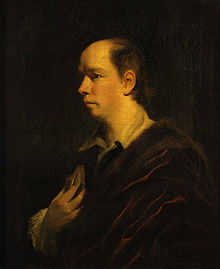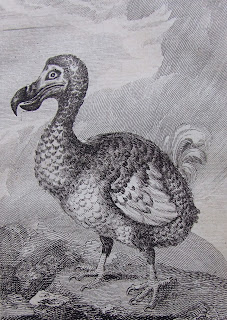Onwards and upwards...
The Dun's Library cataloguing project is continuing apace and another milestone was passed last week when I catalogued the 11,000
th item! Although there is still have a long way to go, it has been great to see the numbers going upwards and know that all the hard work is paying off. The item in question is a pamphlet from the Fleetwood collection, which was donated by
Dr. John Fleetwood, eminent physician and medical historian. I am also nearing the end of the e-cataloguing of the Fleetwood collection, which marks another important point in our ongoing project.
 |
| Oliver Goldsmith |
The pamphlet is entitled "The mystery of Oliver Goldsmith's medical degree" by J. B. Lyons (1922-2007), another well respected physician, writer and medical historian. Lyons was born in Mayo and during his early career he served in the Mater Hospital. He was made a Member of this college in 1949, before moving to England and later serving as ship's doctor on a cargo liner sailing between Japan and South America. He settled in Manchester and married a Welsh nurse. They later returned to Dublin in 1955, where Lyons worked in St. Michael's Hospital, Dun Laoghaire and the Mercer Hospital. Lyons was made a Fellow of this College in 1959. He wrote numerous books, including a biography of Oliver St. John Gogarty (1878-1957) and a study of the medical references in the work of James Joyce; this book is a part of the Fleetwood collection. Lyons also wrote a book entitled "What did I die of?': The deaths of Parnell, Wilde, Synge, and other literary Pathologies" on the medical conditions of well known Irish figures, which is also available in Dun's Library.
Oliver Goldsmith (1730-1774) was born in Ireland and received a B.A. from Trinity College in 1749. He studied medicine in Edinburgh and Leyden, but his efforts were desultory to say the least. Lyons' pamphlet focuses on the rumours surrounding Goldsmith's medical education as there seem to be no records of him in the registers in Edinburgh and Leyden. This is also coupled with the fact that his practice of medicine was very sporadic and wholly unsuccessful. However his lack of interest in medicine and its practice was simply due to the fact that his true passion was writing and it was this career that he pursued. Lyons also concludes that Goldsmith's medical degree was valid, although he did not practise medicine. He also worked variously as an apothecary's assistant and an usher of a school to pay his bills.
Goldsmith's most famous novel The Vicar of Wakefield which was published in 1866, was one of the most popular and widely read books in Victorian England and is mentioned in works by Charles Dickens, Charlotte Bronte and Jane Austen to name but a few. His comic play She Stoops to Conquer is still performed around the world today and his poem The Deserted Village is also studied in universities as a classic example of 18th century poetry. He also wrote eight volumes of work on natural science entitled An History of the Earth and Animated Nature, which seems to indicate his interest in science continued after his university days. Goldsmith's death was premature at the age of 40 and he is buried in London. There is a monument to him in Poet's Corner in Westminster Abbey with an epitaph written for him by his great friend Samuel Johnson. In recognition of their former student, Trinity College also has a statue of Goldsmith on their campus.
 |
| The Dodo, for Goldsmith's natural history |
The medical, scientific and historical records mentioned in this post are all available in Dun's Library; see our
online catalogue for more details. To make an appointment to view these, or any other material, please contact
heritagecentre@rcpi.ie or phone 01-6698817.
Ruth Talbot,
Library Intern